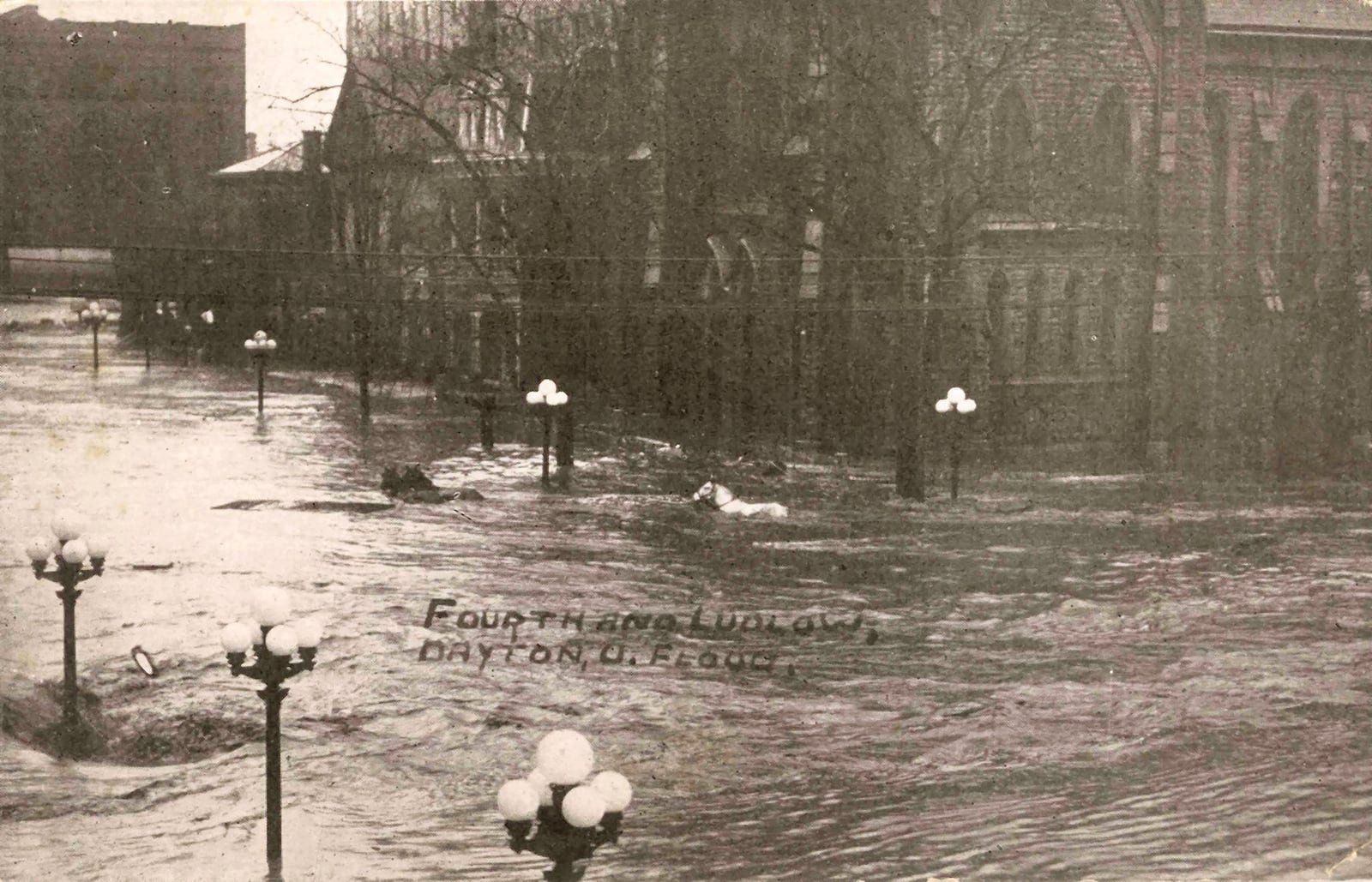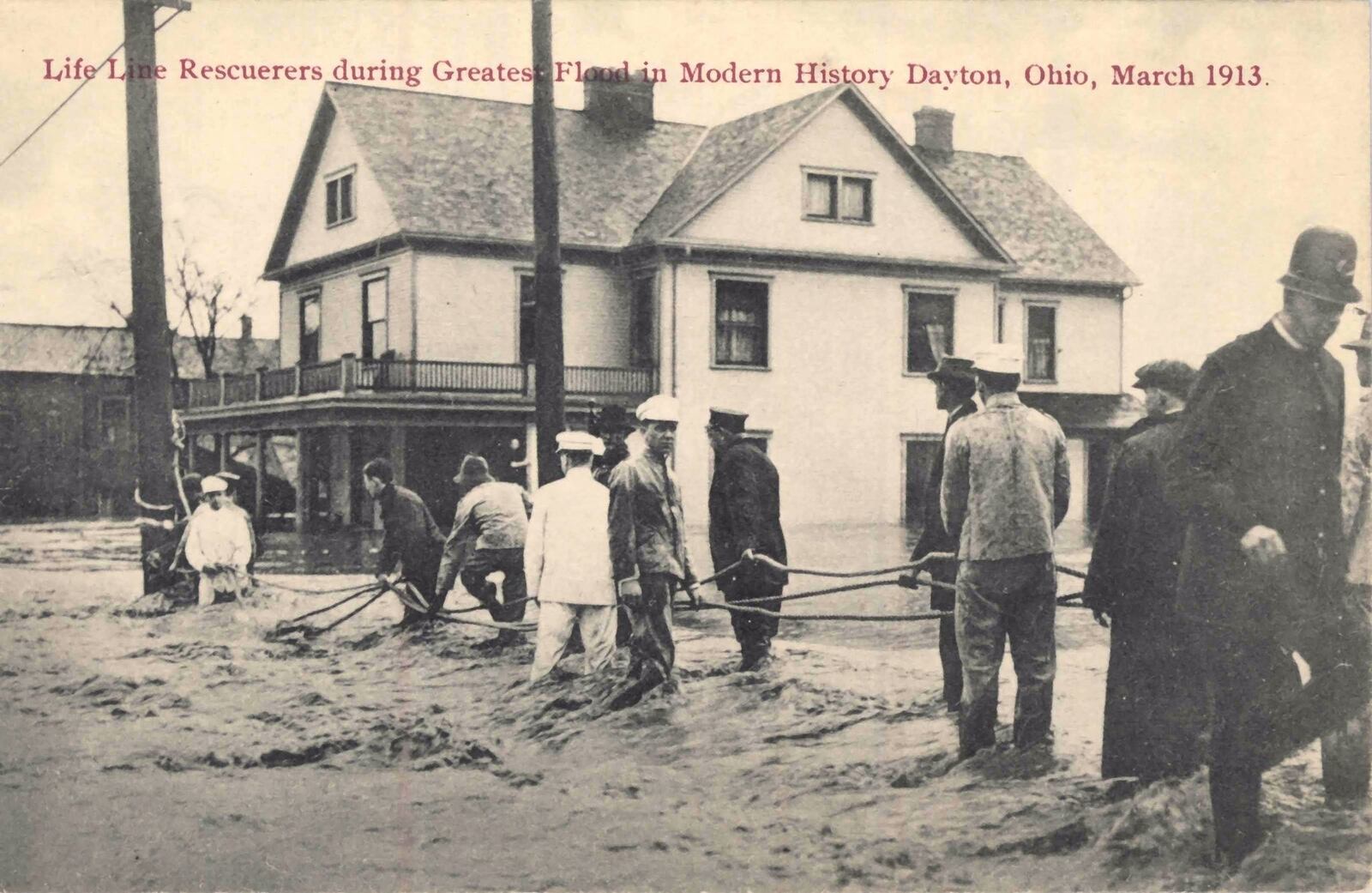The Great Dayton Flood of 1913 devastated the city.
A Dayton Sanitation Department report from the era listed the destruction: 1,420 dead horses and 2,000 other dead animals were removed; 133,600 wagon loads of debris were cleared and 13,991 houses and cellars were cleaned and disinfected. The National Weather Service estimates that between 98 and 123 people lost their lives.
Scenes from the flood, printed on one-cent picture post cards, were mailed across the country as testimony of the catastrophe. Correspondence assured friends and families that the letter writer was safe.
Amos Crow, who operated a restaurant and wholesale store in downtown Dayton during the flood, wrote a letter on April 5, 1913 to his parents in Van Wert. Excerpts from the letter were printed in a 1993 Dayton Daily News column written by Roz Young.
This is the most awful sight I ever saw and do not care to see another soon. We have been living very slim since the flood but are glad to get anything.
We look around and see people in worse shape than we are. We saved everything at home but lost the wholesale place and the restaurant. The walls all washed away from the building we are in.
Our horses have drowned. We had them in a livery barn close to the wholesale house. There were about 100 horses in the barn. I saw one horse hanging by the heels on a guy wire with just his head touching the ground.
People climbed up trees and stayed there for 48 hours in all that rain and sleet without shelter or drink. The water was 13 feet deep on my restaurant floor.
I saw houses go down the river and people on top of them.
It is now 10:00 p.m. I am on police duty. I have charge of a large department store from 6 at night until 6 tomorrow morning. I have five floors to look after and I made a round all over the store every hour. There are no stores closed up as all the windows are broken and a great amount of goods washed away.
The floor is covered with about 6 inches of sticky and oily mud. You cannot imagine the conditions. We read about floods in the paper but do not realize what it is until we see some of the real thing.
I do not think the dead will reach over 400. There were about 1,400 horses drowned. It would be impossible to estimate the amount of damage done here. The fire burned about one and a half blocks in the business parts besides a great many in the residential parts. Three paint stores burned, Barrets, where I used to work, Lowe Brothers and Irvins, all were swept by fire when the water was 12 to 14 feet on the street.
I had two families in my house for several days. There were 20 of us in all.
Amos
About the Author


